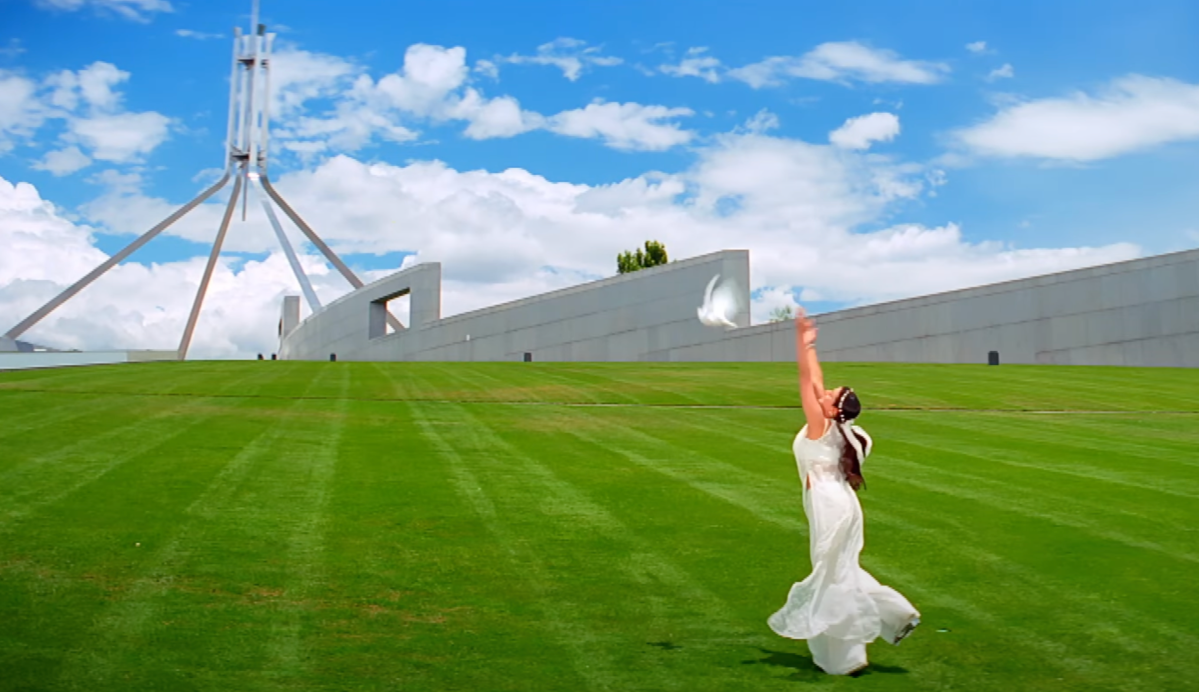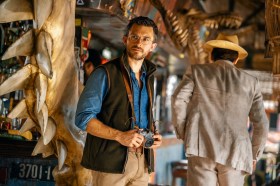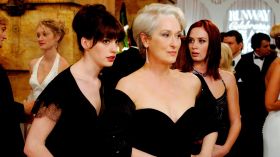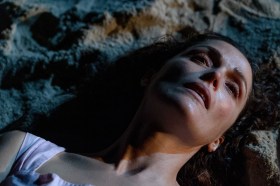Indian-Australian director Anupam Sharma’s latest feature documentary, Brand Bollywood Downunder maps and tracks Australia’s connection with the Indian film industry, ‘Bollywood’, and how an otherwise untapped location began to take over some of the biggest Hindi films in the early 2000s.
But despite an impressive package of interviews with the who’s-who of the Hindi film industry, like veteran actor Anupam Kher and director of the Oscar-nominated Lagaan Ashutosh Gowarikar, Brand Bollywood struggles to remain engaging in a 90-minute run.
To understand why Bollywood is such a mammoth cultural influence and yet embarrassingly misunderstood is a story for the ages, and Sharma, who is also a co-writer of the film, is aware of the task at hand. A postcolonial nation that expresses itself through dance and music – even when diving into tragedy – is home to a $3 billion industry, producing more than 1,000 films a year in almost 30 different languages.
A certain sincerity
Scratching the surface of why Bollywood continues to attract eyeballs beyond South Asia while not following a ‘typical’ format of storytelling (like jumping into a ‘dream song’ when thinking of a beloved) requires a certain sincerity. And while Sharma has his focus right, creative choices like giving Bollywood an actual character with a female voice who announces ‘I am Bollywood’ multiple times in the documentary is jarring and takes away from an otherwise important story.
Brand Bollywood especially shows strength in uncovering the history of Bollywood and Australia. Iconic but widely unmentioned Mary Ann Evans, also known as Fearless Nadia, was a Perth resident who rose to prominence in Indian films as a stuntwoman in Hunterwali in 1935 – even before India released its first ever colour film – finds an important screen space in the documentary. One of the earliest female-led Indian films, Hunterwali was a blockbuster and Mary then settled in India for good.
Fearless Nadia is a unique connection between the two countries who struggle to find more in common beyond curry and cricket.
Diaspora
With the fastest growing diaspora in Australia, Indian-born population is projected to reach 1.07 million by 2035. And with that comes a better understanding of India’s love for films and dance. Naatu Naatu from the highly acclaimed Telegu film RRR winning the Best Original Song award at the 95th Academy Awards should perhaps also bring a good time to retire the ‘take off the bulb’ dance move.
‘It started with a snigger, snigger went to ridicule, ridicule then went to attention, it then went to curiosity. Now we’re at amazement,’ – director Ashutoh Gowarikar sums Bollywood’s evolving perception in the west almost perfectly.
When Brand Bollywood highlights Australian producers who started working with Indian production houses in early 2000s to coordinate shooting, it uncovers vast cultural differences in not just how films are made in India, but how Indian crews would function off camera.
‘They wanted to bring “chaiwallahs” (tea sellers) with them!’ quips an Australian producer on the requirements of Indian crews. ‘I said I am sure we can arrange someone to make tea here.’
From spot boys to ‘umbrella boys’ – people who will hold umbrellas for the actors in between scenes – a typical Bollywood set would look larger than necessary for an Australian producer. Two-worlds-colliding, chaotically trying to work together with a big focus on dancing against the Harbour Bridge or Flinders Street.
It is endearing to hear from people who happened to stumble across the cross-country collaboration two decades ago with little idea of what it would begin to look like.
Massive Indian films like Dil Chahta Hai, Salaam Namaste and Chak De India! have been shot in Australia. And while culture is often also business, economy has been a big driving factor for the two countries to come closer through films. Indian diaspora brings in profit and Australia gets to maintain its dream-destination tag and attract more tourism from the country.
Rift
But the 2008 racial attacks against Indian students brought a drift between the two countries. It also led to India’s biggest movie star Amitabh Bachchan deny receiving a doctorate from The Queensland University of Technology, Brisbane, honouring him for his contribution to the world of entertainment.
Sharma’s Brand Bollywood does outline the impact of 2008 on India and Australia but gets over it quickly before also trying to highlight the community’s feelings about Australia’s only Indian film festival, the Indian Film Festival of Melbourne – a jump that looked out of place in the documentary. Towards the end, the voice and purpose of Brand Bollywood start to appear unclear.
Sharma shines when he talks about the past but the narrative dwindles when we look towards the future. Given he’s a former film student in Australia, it would have been interesting to hear from current Indian students who want to make independent films in Australia. Will they be crushed by big Bollywood production houses or can Australia birth an appetite for alternative Indian cinema?
Anupam Kher says in the documentary: ‘I hate it [the term Bollywood]. It’s a borrowed term and we’re idiots to have accepted it.’
As we move beyond the shackles of what the West wants India to look like, it is imperative to ask what Indians want to show. Unfortunately, Brand Bollywood didn’t quite go there.
Brand Bollywood Downunder is in Australian cinemas now.
Actors:
Director:
Format:
Country:
Release:





